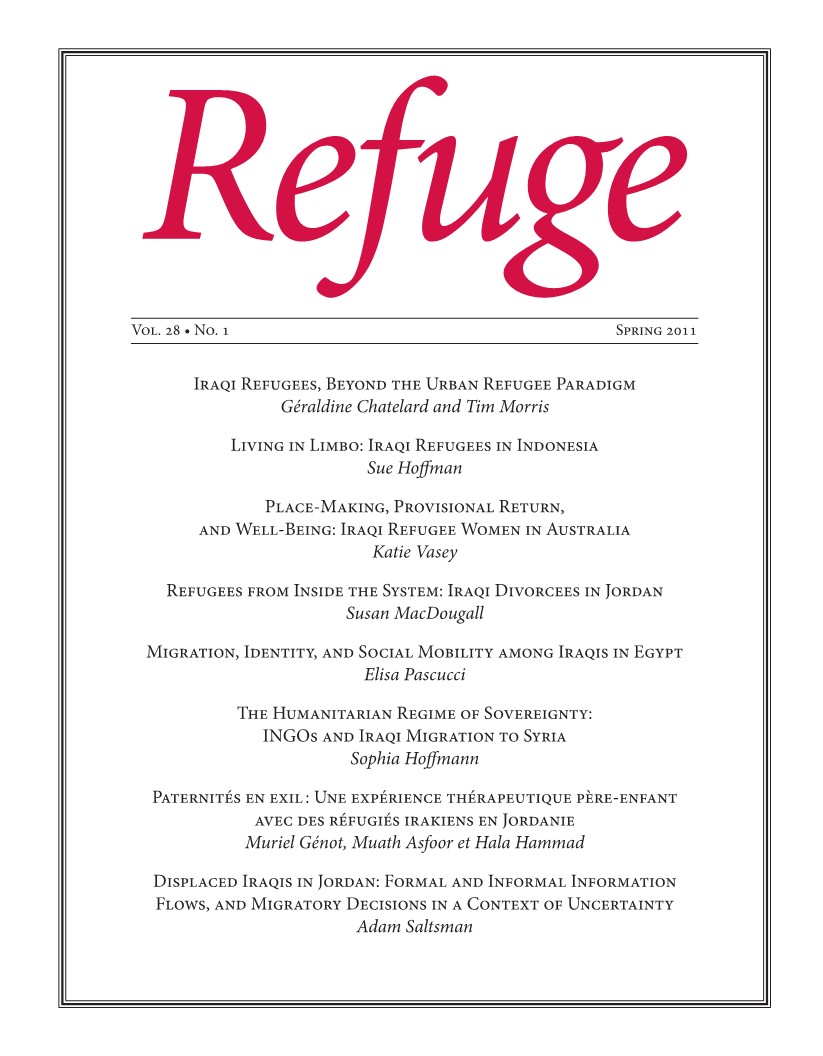Bordering on Conventional: The Politics of Iraqi Resettlement to the US and Europe, 2003–2011
DOI:
https://doi.org/10.25071/1920-7336.36094Keywords:
United States, European Union, Iraqi refugees, US foreign policy, Common European Asylum System, CEAS, refugee policy, asylum, resettlementAbstract
Of some 2.5 million Iraqi citizens internationally displaced in the wake of Operation Iraqi Freedom, less than 100,000 have achieved permanent international resettlement. This paper compares US and EU policies regulating the selection and admission of Iraqi refugees since 2003, focusing on the divergent political priorities and structural considerations underpinning variations in resettlement levels during this time. I argue that US resettlement of Iraqi refugees is primarily an element of foreign policy, defined by strategic objectives in Iraq and the surrounding region, whereas admissions to the EU reflect ongoing intra-European debates surrounding the construction and modification of the Common European Asylum System (CEAS). Whereas resettlement to the US increased drastically following a “strategic” reframing of the Iraqi refugee crisis in 2007, failures in the implementation of CEAS’s “standardization” agenda, compounded by enhanced European restrictions on refugee movement, have limited Iraqi admissions to Europe during this time.
Metrics
Downloads
Published
How to Cite
Issue
Section
License
Copyright (c) 2012 Chantal E. Berman

This work is licensed under a Creative Commons Attribution-NonCommercial 4.0 International License.
Refuge authors retain the copyright over their work, and license it to the general public under the Creative Commons Attribution-Non Commercial License International (CC BY-NC 4.0). This license allows for non-commercial use, reproduction and adaption of the material in any medium or format, with proper attribution. For general information on Creative Commons licences, visit the Creative Commons site. For the CC BY-NC 4.0 license, review the human readable summary.







